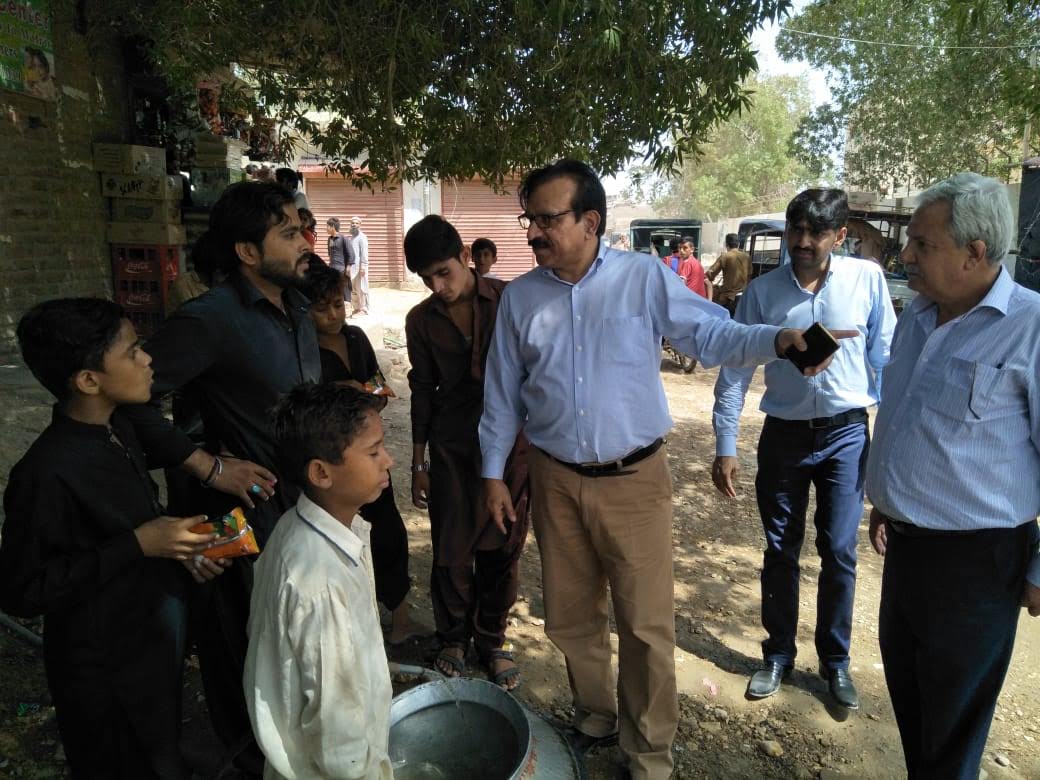 Dr Rana Jawad Asghar (center) on a recent field mission in Pakistan (Photo: Rana Jawad Asghar).
Dr Rana Jawad Asghar (center) on a recent field mission in Pakistan (Photo: Rana Jawad Asghar).
This week, influenza surveillance experts and representatives of Ministries of Health across WHO’s Eastern Mediterranean Region are meeting to discuss monitoring and evaluation of sentinel-based influenza surveillance systems. Ahead of the event we spoke with Dr Rana Jawad Asghar, epidemiologist and surveillance system expert.
Early detection of influenza outbreaks is crucial for public health, and strong surveillance systems are key to achieve that detection. Dr Rana Jawad Asghar knows what such a strong system looks like: he has seen over 200 examples in his work as US CDC Resident Advisor for Pakistan's Field Epidemiology Training Program, a role he held until December of last year before becoming chief executive officer of a new global health security startup called GHSI.
Dr Asghar: “To know the strength of your surveillance system, first you must understand what its objective is. In most cases it comes down to two things: first, when your system signals 100 cases, how many were correctly identified as infected? And second, when you know there are 100 patients, how many of those did the system recognize as sick?”
Detailed protocols and guidelines guide these evaluation exercises in an objective and comprehensive manner. Dr Asghar: “Once you’ve understood the objective of your system, you go into detail. Is the system sensitive? Specific? Timely? You go one by one, through your protocol.” Following these steps not only gives you a score, it also provides evidence to identify areas of improvement.
According to Dr Asghar, one such area of improvement for the Eastern Mediterranean Region is the use of digital surveillance: “We need to move from writing down our numbers on paper, to using real-time, online systems. During a recent dengue outbreak in Pakistan for example, the Government set up a very nice smartphone-based surveillance system. We’ve seen the same for other diseases too. The tech is there, it’s been tested, we just need to shift into using it in more places.”
Improving surveillance is not always an easy task. Besides financial, expertise and technological challenges, the mere sharing of data can quickly become political. Dr Asghar: “If I have a stronger system than those on the other side of national or even state borders, I will record more cases of a disease. I might fear that this looks like my health system is weaker, when in fact the opposite is true. If this misconception is not countered, there will be a disincentive to improving surveillance. Thankfully, the World Health Organization and partners play the important role of teaching senior officials that we should congratulate them on having proper surveillance and picking up all cases.”
Before all of these considerations however, Dr Asghar sees a more fundamental question: “You have to understand the value of surveillance. If that awareness doesn’t exist, nothing else will matter. My old boss at CDC used to say: ‘Look, you can write with a 50-cent pencil, or with a Mont Blanc pen that costs 3000 dollars. But first, you need to know how to write.’ And I’ve seen it happen that governments invest large sums of money in a shiny online system with fancy dashboards, and not record any reliable data. So first, we need to learn how to ‘write’; the tools are secondary.”
Last year, in a meeting of public health officials working on infectious diseases, an expert panel on influenza unanimously agreed that the world is still ill-prepared for a new outbreak of pandemic influenza. The experts also agreed that such a pandemic is a matter of ‘when, not if’. Should we not be more worried? Dr Asghar: “The WHO global system of influenza surveillance is over 65 years old and one of the longest-running in the world. Over its life course, the amount of countries that participate has increased tremendously, which is a big achievement. But a lot of work remains. One concern I have is that we are trying to do too much at once. If we look at the Joint External Evaluation process, which includes surveillance indicators, initially we were tallying 11 components and 14 technical areas. This resulted in countries drafting billion dollar plans which they could never afford. Last year, the amount of components was reduced to 8, but I would like to see a further priority focus on perhaps just 3 or 4 key areas at first.”
Although much important work remains, Dr Asghar emphasizes the monumental efforts that frontline health workers make each day: “It’s very easy to say ‘hey, look at this report card: you don’t have a good surveillance system!’ to a country in the midst of armed conflict. This Region has more than its fair share of turmoil. We really have to appreciate all the public health professionals that are working beyond their capacity and thinking outside the box to get the data out - no matter the circumstances.”
Follow @WHOEMRO for live updates from the event and subscribe to the monthly Infectious Hazard Management Update for all the latest.








